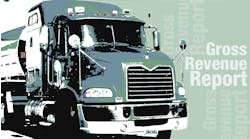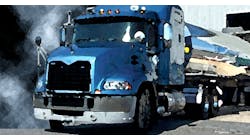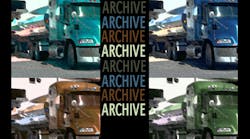Latest from Gross Revenue Reports
Of all the trucking industry sectors, the tank truck industry was the one that was most definitely in full economic recovery, according to trucking industry economists. The economic vigor was clearly reflected in this year's Bulk Transporter Annual Gross Revenue Report.
Mid-2011 economic reports showed that the tank fleet activity was growing by about 20%. Capacity was the biggest challenge faced by tank fleets. They simply couldn't handle all of the available loads, because many fleets had downsized during the recession. The trucking industry overall in 2011 was 13% smaller than before the recession.
Loads certainly were plentiful. Truck tonnage in general posted gains throughout the year and jumped 6.8% in December, the highest annual gain in 13 years. Chemical production rose in general with big gains in organic chemicals, pharmaceuticals, manmade fibers, pesticides, adhesives, and industrial gases. Chemical exports were up nearly 11% in 2011. Construction showed modest improvement, with construction spending hitting a 17-month high ($807 billion) in November.
The oil and gas shale plays had a big impact — both good and bad — on the tank truck industry. On the good side, many carriers found profitable work supporting the oilfield boom. The downside of the oilfield boom is that it has drained drivers from the rest of trucking, created significantly higher expectations for driver wages, and raised equipment costs.
The impact of the various economic factors can be seen in this year's Gross Revenue Report. Almost 65% of tank truck carriers participating in this year's report posted higher revenues, but just 38% showed improved operating ratios.
Those benefiting from improved economic conditions in 2011 included most of the Top 10 tank truck carriers. All but two posted higher gross revenues for the year.
Once again, Kenan Advantage Group Inc held the top spot. The rest of the Top 10 included Quality Distribution Inc, Trimac Transportation Inc, Ruan Transportation Management, Superior Bulk Logistics Inc, Groendyke Transport Inc, A&R Logistics Inc, Schneider National Bulk Carriers Inc, Foodliner/Quest Liner Inc, and Enterprise Transportation Co.
Combined Top 10 revenues were $3.7 billion in 2011, a solid improvement over the $3.35 billion posted in 2010. Top 10 revenues accounted for 62.1% of the total in the report.
The Top 25 carriers achieved $5.21 billion in revenues, or 87.2% of the total represented in this report. In 2010, the Top 25 accounted for $4.68 billion.
Total 2011 revenues for all 57 carriers in this report were $5,983,948,515. In contrast, the 57 carriers in the 2010 report accounted for a combined total of $5,459,195,275.
Average revenue for 2011 was $106,602,448, up $10.8 million from the average of 95,775,355 in 2010.
The median carrier on the list, the one with an equal number of carriers above and below it, had revenues of $45,165,200. In 2010, the median carrier revenue was $45,200,000.
Operating ratios for both 2011 and 2010 were supplied by 34 of the carriers in this report. A little over a third showed improvement compared with the previous year. The operating ratio represents operating expenses as a percentage of revenue.
A majority of the 2011 operating ratios were above 95%. Twenty fleets reported operating ratios between 95.0% and 99.9%, and one listed a ratio at 100%. In 2010, 25 fleets had operating ratios in this range, and one was at 100%.
Thirteen carriers reported operating ratios below 94.9%, and three of those were below 90%. In 2010, 15 carriers had operating ratios below 94.9%.
Many of the fleets participating in the 2011 report submitted data used to calculate tractor revenues. These numbers give an indication of productivity levels, and productivity definitely improved during 2011. The average for 2011 was $215,425, up from $196,911 in 2010.
Half of the Top 10 reported tractor revenues, averaging $271,941. This was well above the $218,216 average reported by the Top 10 in 2010.
As they have for several years, petroleum haulers led the way in fleet productivity. The best productivity (tractor revenue of $352,819) came from a Northeast petroleum carrier. The lowest tractor revenue ($154,321) was reported by a dry bulk hauler.
Average revenue per tractor for a representative sample of six petroleum haulers was $230,469, down from the previous year's average of $264,598. The lowest tractor revenue reported by a petroleum fleet was $158,426.
Six chemical haulers accounted for average revenue per tractor of $192,862, up from $165,930. The high for chemical tractor revenue was $228,944, and the low was $170,909.
Among four carriers that focus on transporting dry bulk cargoes, tractor revenue averaged $201,925, down slightly from the 2010 average of $204,926. The high for dry bulk tractor revenue was $293,888.
Many of the figures used here are from preaudited reports and may include nonbulk revenues or revenues from subsidiary tank truck carriers. In all cases, the numbers were supplied directly to Bulk Transporter. The staff greatly appreciates the cooperation of all who helped in the preparation of this report.
To view a chart with this year's ranking and revenues, use the "Related" link below to find it and all reports going back to 2001 in the Gross Revenue Reports Archive.









